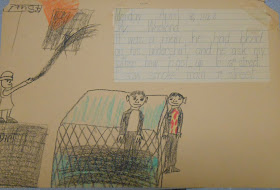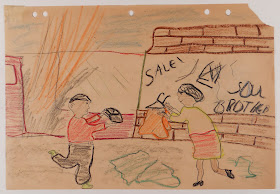 In response to Martin Luther King's assassination on April 4, 1968, riots broke out in Northwest Washington, DC's predominately black neighborhood around 14th and U streets. 2,500 law-enforcement officers were able to establish order in the early morning of Friday, April 5. By then 150 stores had been looted and 200 people had been arrested. On Friday, April 5, the riots spread to other parts of the city. They were still going strong on Saturday, April 6, despite the deployment of more than 13,600 federal troops and National Guardsman. The security forces were under strict orders from Mayor Washington not to shoot rioters. When the riots finally died down on Sunday twelve people had died and more than 1,000 had been injured.
In response to Martin Luther King's assassination on April 4, 1968, riots broke out in Northwest Washington, DC's predominately black neighborhood around 14th and U streets. 2,500 law-enforcement officers were able to establish order in the early morning of Friday, April 5. By then 150 stores had been looted and 200 people had been arrested. On Friday, April 5, the riots spread to other parts of the city. They were still going strong on Saturday, April 6, despite the deployment of more than 13,600 federal troops and National Guardsman. The security forces were under strict orders from Mayor Washington not to shoot rioters. When the riots finally died down on Sunday twelve people had died and more than 1,000 had been injured.
In response to the riots and to help the children who attended the inner city schools in the riot areas cope with what was happening around them, Norman W. Nickens, the assistant superintendent, gave the following instruction to his teachers:
"Remember, classes simply cannot go on as usual. Unusual events have occurred and your children are preoccupied with these. In times of crisis, children learn rapidly. Therefore, make use of the events of the April 5 weekend to help them learn. Do not fail them by lecturing when they need to talk."
 John Mathews, a reporter on education for The Evening Star in Washington, DC, who quoted the above passage in a 1968 article he wrote with Ernest Holsendolph for the New York Times Magazine had access to some of the material that had been created by the children. According to Mathews, "the discussions, compositions and pictures showed that fear and a feeling that the adult world was spinning out of control were prevalent emotions."
John Mathews, a reporter on education for The Evening Star in Washington, DC, who quoted the above passage in a 1968 article he wrote with Ernest Holsendolph for the New York Times Magazine had access to some of the material that had been created by the children. According to Mathews, "the discussions, compositions and pictures showed that fear and a feeling that the adult world was spinning out of control were prevalent emotions."
We recently received several drawings created by these kids who were then between the ages of 8 and 14. The feeling of devastation is prevalent in all of them, so is the fear. However, Mathews also noticed a certain "excitement and elation" related to the fact that "before the troops arrived in force, masses of black people controlled the streets and for once, it was truly safe to be black."

To view the collection, which contains 23 drawings, as well as a variety of posters, student newspapers and ephemera of that time ask for MS-1335.




No comments:
Post a Comment